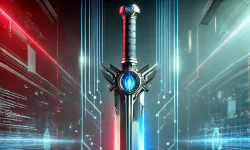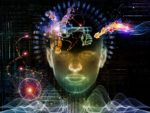Life is about creating values, not about expropriating values.
Aristotle
Human activities are consequential for the physical world around us. The more advanced the technologies we use, the deeper, wider and more complex is the impact. The purpose of what we do is to create products that we need, but the process of materializing our wishes, however, includes generating side effects. In most cases those side effects influence negatively the environment we live in: we still drive cars which pollute the air we breathe, and we consume salmon with unwanted ingredients due to new breeding technologies introduced in order to satisfy the growing demand. We are living in a world where, following our dreams, we keep on testing the limits of Homo sapiens survivability in new physical parameters. This is a risky game, because we are vulnerable – as Jaan Tallinn puts it, “The harsh reality is that the universe was not made for us; instead, we are fine-tuned by evolution to a very narrow range of environmental parameters. For instance, we need the atmosphere at ground level to be roughly at room temperature, at about 100 kPa pressure, and have a sufficient concentration of oxygen. Any disturbance, even temporary, of this precarious equilibrium and we die in a matter of minutes.” This game is anthropogenic because we, humans, invented it, and we, humans, have decided to play it. And with the exponential technologies such as AI and gene editing, where we are still not fully aware of their potential consequences, and especially their military projection, the game we are playing gets closer and closer to Russian roulette.
Brain Patterns of Decision Making
Human intelligence is about the human brain finding solutions that lead to providing our biological shell – the body, with better chances of survival and advantage. It does so through our brain’s Neocortex inventing new types of behavior – some of which are improvement to what is already practiced, some are failure. With time, the positive experience accumulates into a “library” of successful and efficient solutions, the frequent use of which creates “shortcuts” – the stereotypes we apply in given situations practically without bothering to subject them to checks and analysis before we undertake them, simply because multiple knowledge of the desired result has firmly convinced us, that they never fail. The more important the issue and the longer time we have practiced the method, the more rigid that shortcut grows, at times elevated to the pedestal of unquestionable eternal truth. This is how stereotypes reach a harder degree of fossilization and constitute the stages of human cultural evolution.
Stereotypes exist in the brain neural network as a low-threshold configuration of neurons into which the brain is happy to easily slip once it has recognized the situation to be solved, because, so far, always in its past experience this particular solution has been consecutively assessed as the winning one. In the long term, however, certain deep and essential changes in the nature of our ecosystem can evolve in a way that the control points used by the brain to identify the problem preserve the visibility of the old situation, in which case the brain could apply automatically its favorite route response that may lead to catastrophic consequences. We should not blame our brain for that: it still is that wonderful, compact and portable “convoluted mechanism converting tens of millions of input signals per second into a roughly equal number of output signals” (Jasanoff, Alan), running on 20 W power. We must, however, adjust our approach to knowledge with profound consideration of the reality that Homo sapiens brain was designed for their primitive life as it was some 200 000 years ago.
Each Historic Era Has Its Dominating Stereotypes.
Expanding human knowledge and technological advance forced disruption of practices that got obsolete and were replaced by new, better and more efficient solutions: today we don’t use any more horse carriages to travel long distance, we don’t accuse suspicious women of witchcraft and burn them at the stake, and we don’t practice economically inefficient social orders such as slavery or communism. At any stage when the then-current model, no matter how old and how popular, becomes inconsistent with empirical reality, it must be changed or completely dismissed. In both instances, there appears the need of designing new concepts. Otherwise the unverifiable conceptualization at the higher levels of abstract thinking, the broken logical chains can remain unnoticeable, reality will turn out not be what we think it is, and this will bring us to confront the consequences of inadequate responses. For example, some hundreds of years ago, there were no automobiles, they were invented later. But today we have cars, we have the concept and the words for cars, we recognize them and their properties, and we are careful when crossing a street not to get hit by a car. Snails, for example, don’t, and if accidentally they get on the highway, snails get smashed by running cars. In the way we learned to protect ourselves from running automobiles, we have to precisely conceptualize the by far more complex contemporary existential risks, recognize them and organize measures to minimize the probability of existential risks happening. Otherwise, we would keep behaving like snails on a frequented highway.
The Contemporary Threats
Throughout history, wars and violent conflicts have been used as instrumental for achieving goals of tribes, nation-states or groups of people: to invade foreign countries and plunder wealth or territory, to solve a domestic policy issue, to make a dictator feel himself great, to assert one ideology, ethnicity or religion over another, to imitate civilizationally meaningless persons like Alexander the great, Napoleon or Hitler, to dominate the world, and many other atavistic remainings of the long-overdue tribal thinking. There is no doubt that the millennia-old culture of war persists as if nothing happened even after year 1945, when the previous World War that brought 85 million human deaths and unprecedented destruction, ended.
From technology point of view, however, the next World War would be nothing what humanity has experienced before. In terms of nuclear destructive power, AI-assisted and based on hypersonic carriers, even the habitability of the whole planet would not be an impossible target.
Today in most countries, generations of politicians and their advisors and assistants, as well as analysts, university professors, military personnel etc. have been taught by centuries old books on war tactics and strategy, and nurtured with the stereotype that wars and violent conflicts are a routine legitimate instrumental for achieving political goals that serve country or a cause. They are millions in numbers, and many of them are in high positions associated with government decision making. And because
the anthropogenic risks for the Human civilization have only one place where they can emerge, hide and develop – in the human brain, that makes many of the above-mentioned categories of individuals walking detonators for potential regional or global conflicts.
If we look at the intensity of confrontation in the current geopolitical condition, it is not difficult to conclude that World War III would most probably start at an instance where one of the big powers gets fully confident about its military supremacy, or where it gets cornered into a position to decide that a preemptive strike would be more advantageous than retaliation.
The Only Adequate Solution To Contemporary Anthropogenic Risks: Reopen Your Eyes
Like other stereotypes, ideologies and doctrines also can get obsolete, and in the current global condition, most of all they need are regular checks against reality and unceasing scrutiny of any possible developments. More importantly, in a unique and controversial situations like this, we need radically new approaches to stabilize the future for Human civilization. Denouncing culture of war and designing new rules for the eternal spirit of human competition should be part of the new approach.
“The root challenge and the root opportunity is the human mind: we have need – economic demand, cultural, and we have the means. For the first time in history, we have the chance to elevate human consciousness; humans evolving beyond biology. Scientists, inventors, entrepreneurs, operators – we can have our contribution to humanity’s evolution.” Nichol Bradford, CEO of the Willow Group, at 2019 SU Global Summit.





 Expanded Password System
Expanded Password System